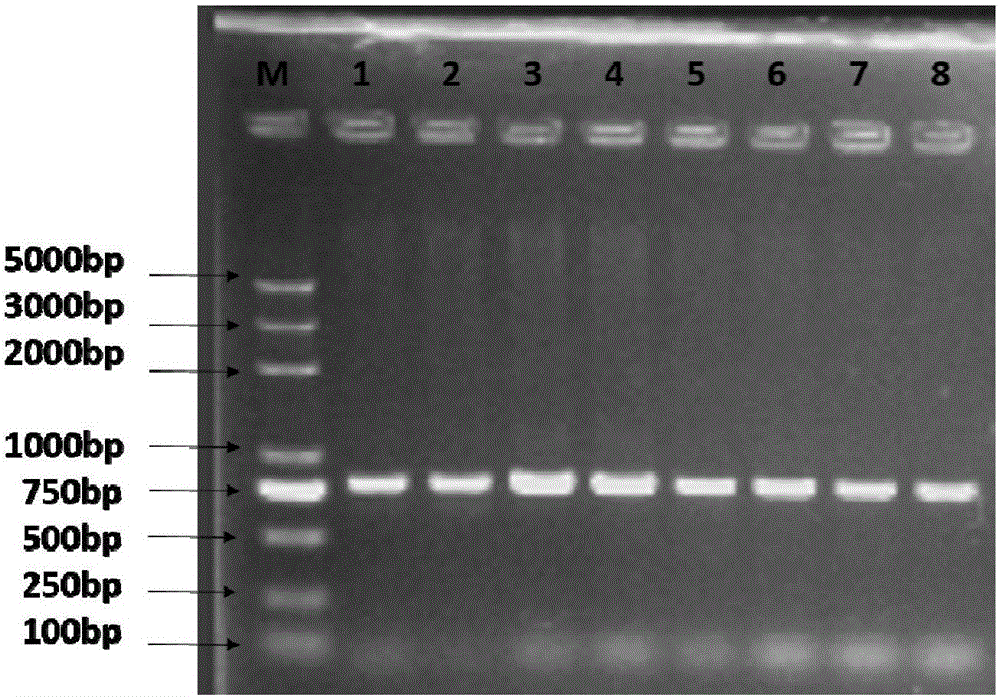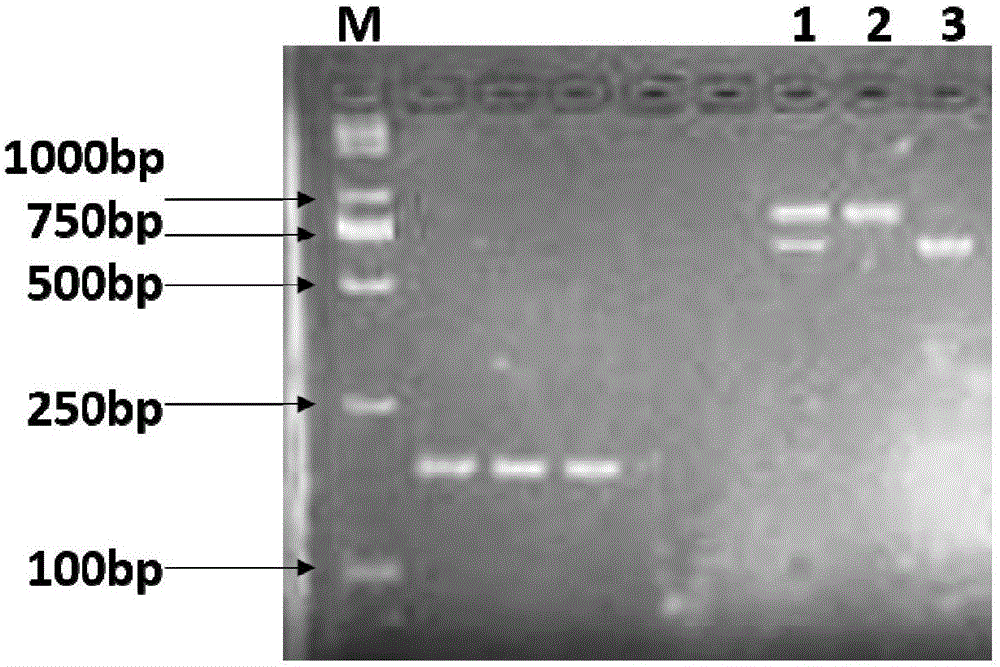Method assisting in identifying chickens different in pectoralis water-holding capacity and special primer of method
A hydraulic and breast muscle technology, applied in biochemical equipment and methods, microbial measurement/inspection, DNA/RNA fragments, etc., can solve problems that are difficult to apply to breeding practice, difficult to measure chicken breast meat, and large capital investment
- Summary
- Abstract
- Description
- Claims
- Application Information
AI Technical Summary
Problems solved by technology
Method used
Image
Examples
Embodiment 1
[0035] Embodiment 1, the establishment of the method for detecting the hydraulic power of chicken breast muscle system and its effect verification
[0036] The test flocks are (120 in total): star broiler flocks (40 hens), Shouguang chicken flocks (20 hens), Beijing oil chicken flocks (20 hens), Nongda brown layer hen flocks (20 hens) and Tibetan chicken flocks (20 hens).
[0037] 1. Determination of chicken breast muscle drip loss
[0038] Detect the drip loss rate of the breast muscle of each individual in the test flock, specifically as follows:
[0039] Slaughter at the age of 140 days, take about 80-100g of the right pectoralis major muscle, weigh the weight (weight before dehydration W1), and then put the meat sample into a small net bag, put the meat sample Put the net bag into a plastic bag and fill the plastic bag with air, then tie the mouth of the bag and hang it for 24 hours (the net bag needs to be in a suspended state, so that it cannot touch the inner wall of ...
Embodiment 2
[0061] Example 2, Shouguang Chicken Hen Breast Muscle Hydraulic Power and SNP Genotype Correlation Test
[0062] The test flock is (20 in total): Shouguang chicken hens.
[0063] 1. Determination of chicken breast muscle drip loss
[0064] Detect the drip loss rate of each individual's breast muscle in the test flock respectively, the method is the same as the step one of embodiment 1.
[0065] 2. Genotyping
[0066] Detect the genotype based on the specific SNP of each individual in the test flock, as follows:
[0067] 1. Take venous blood and extract genomic DNA.
[0068] 2. Same as step 2 of embodiment 1.
[0069] The results showed that DNA fragments of about 804bp were amplified using the genomic DNA of 20 individuals as templates.
[0070] Each PCR amplification product was sequenced, all of which were 804bp. The sequencing results showed that the PCR amplification products of the 20 individuals were all shown as sequence 3 in the sequence listing. Based on the sp...
Embodiment 3
[0079] Example 3, the test of the relationship between the hydraulic power of the pectoral muscle line and the SNP genotype of the green-legged dwarf recessive white-feathered chicken
[0080] The test flock is (30 in total): green-legged dwarf recessive white-feathered roosters.
[0081] 1. Determination of chicken breast muscle drip loss
[0082] Detect the drip loss rate of each individual's breast muscle in the test flock respectively, the method is the same as the step one of embodiment 1.
[0083] 2. Genotyping
[0084] Detect the genotype based on the specific SNP of each individual in the test flock, as follows:
[0085] 1. Take venous blood and extract genomic DNA.
[0086] 2. Same as step 2 of embodiment 1.
[0087] The results showed that DNA fragments of about 804bp were amplified using the genomic DNA of 30 individuals as templates.
[0088] Each PCR amplification product was sequenced, all of which were 804bp. The sequencing results showed that the PCR ampl...
PUM
 Login to View More
Login to View More Abstract
Description
Claims
Application Information
 Login to View More
Login to View More - R&D
- Intellectual Property
- Life Sciences
- Materials
- Tech Scout
- Unparalleled Data Quality
- Higher Quality Content
- 60% Fewer Hallucinations
Browse by: Latest US Patents, China's latest patents, Technical Efficacy Thesaurus, Application Domain, Technology Topic, Popular Technical Reports.
© 2025 PatSnap. All rights reserved.Legal|Privacy policy|Modern Slavery Act Transparency Statement|Sitemap|About US| Contact US: help@patsnap.com



